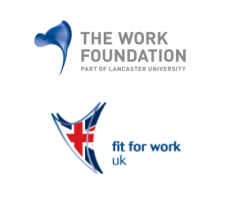September 18, 2014
Global launch of healthy buildings report announced for World Green Building Week
 World Green Building Week 2014 takes place next week (22 – 27 September) with the theme for this year of ‘Get up, Green up’. Created in 2009 to promote a more connected, more interactive, and more public conversation around the role buildings play in creating a sustainable future, this year’s WGBW will feature a range of events held around the world; including Australia, US, Hungary and the United Arab Emirates. On Monday 22 September, as part of WGBW, UK-GBC is hosting a webinar looking at the Ökobau.dat, the German National LCA database for construction, and on Wednesday 24 the global launch event of the WorldGBC ‘Health, wellbeing and productivity in offices: the next chapter for green building’ report, which looks at health, wellbeing and productivity in offices, following an extensive project involving over 50 industry experts from around the world. More →
World Green Building Week 2014 takes place next week (22 – 27 September) with the theme for this year of ‘Get up, Green up’. Created in 2009 to promote a more connected, more interactive, and more public conversation around the role buildings play in creating a sustainable future, this year’s WGBW will feature a range of events held around the world; including Australia, US, Hungary and the United Arab Emirates. On Monday 22 September, as part of WGBW, UK-GBC is hosting a webinar looking at the Ökobau.dat, the German National LCA database for construction, and on Wednesday 24 the global launch event of the WorldGBC ‘Health, wellbeing and productivity in offices: the next chapter for green building’ report, which looks at health, wellbeing and productivity in offices, following an extensive project involving over 50 industry experts from around the world. More →



























September 16, 2014
Indoor air quality and the quest for a breath of fresh air in the workplace
by Justin Miller • Comment, Facilities management, Knowledge, Legal news, Workplace design
Edward Hopper, Office in a Small City, Metropolitan Museum of Art, NY
The modern workplace has to work harder than ever before. It must reflect corporate values, express something of the organisation’s brand, allow people to work to the best of their ability as well as look after their wellbeing, keep touch with the pace of changing technology and meet the demands of an ever changing legislative environment and keep costs down. All of these issues conflate around the challenge of providing a sustainable, comfortable and productive working environment in buildings that are filled with an increasing number of people and computers. It is estimated by the Building Research Establishment that even in a typical office each person and their technology will generate some 1500 W of energy per hour, the equivalent of the sort of fan heater that the EU is now keen to ban outright.
More →